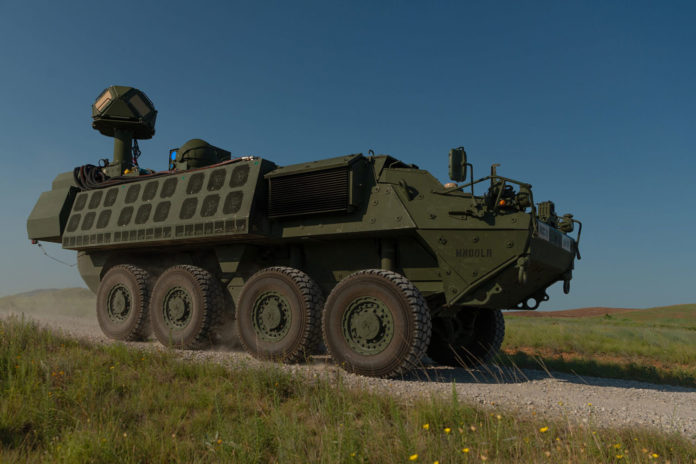The US Army is taking another step towards modern technologies. This time, it is testing a high-power combat-capable laser weapon prototype as a part of its Multi-Domain Operations to modernize missile and air defenses.
Developed in less than 24 months, the solid-state Directed Energy-Maneuver Short-Range Air Defense (DE M-SHORAD) laser was installed on the Stryker combat vehicle and participated in combat firefights in Fort Sill, Oklahoma, during training exercises.
To test its capabilities, the Army Rapid Capabilities and Critical Technologies Office (RCCTO), alongside Air and Missile Defense Cross-Functional Team, Fires Center of Excellence, and the US Army Test and Evaluation Command, took the laser-equipped Stryker to Fort Sill, Oklahoma. The result of these tests is the delivery of a platoon of four laser-equipped Strykers by the Fiscal Year 2022.
During a recent exercise, the Stryker team went through a series of realistic threat scenarios to evaluate the system and find ways to improve future versions. The Combat Shoot-Off, which ended in late July, trained Soldiers to operate the new defensive weapon, utilizing state-of-the-art immersive technology to quickly familiarize them with the DE M-SHORAD system. Within days, they were operating the system, demonstrating proficiency in target acquisition, aim point selection, and engagements.
As a result of the exercise, the soldiers recommended replacing the standard setup controller with commercial game controllers for greater convenience. In addition, soldiers were also provided detailed 3D schematics of the weapon and its parts, along with their dimensions and training manuals on handheld devices.
The Combat Shoot-Off culminated with Soldiers executing a series of vignettes designed to emulate realistic threats and combat scenarios. The DE M-SHORAD laser weapon system demonstrated the design characteristics and performance criteria established for the program.
“This is a prototype, and we are going to learn from this,” said LTG L. Neil Thurgood, Director for Hypersonics, Directed Energy, Space and Rapid Acquisition, which includes the RCCTO. “We needed this to do two things: design it so it is safe enough to give to Soldiers and make sure it engages with the target it needed to. The science project in this technology is over. It’s time to give our Soldiers this first-ever operational capability.”
